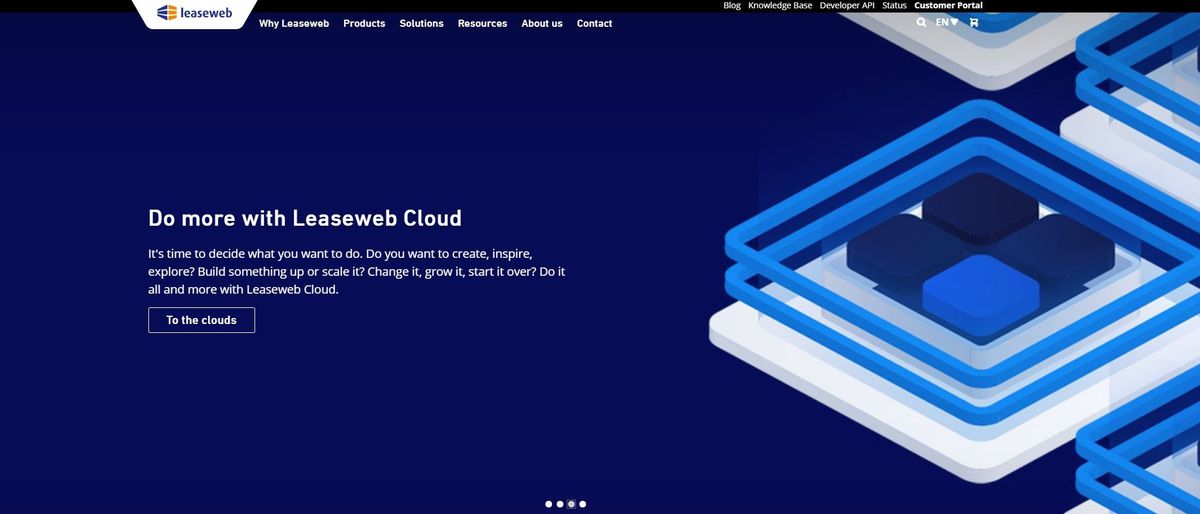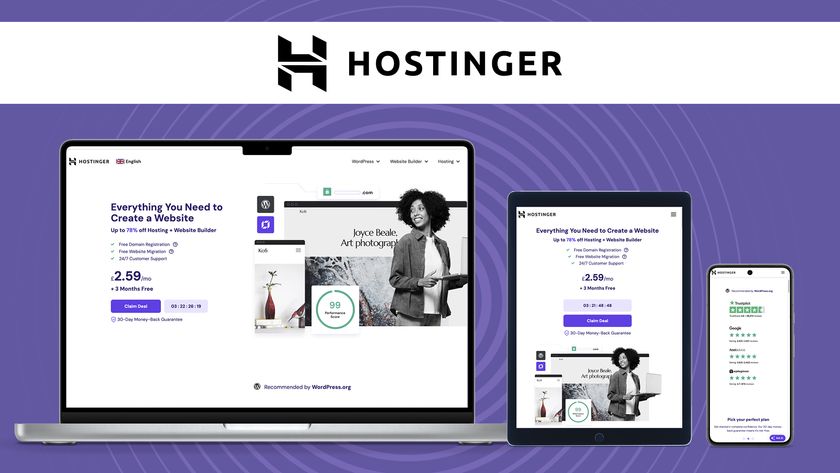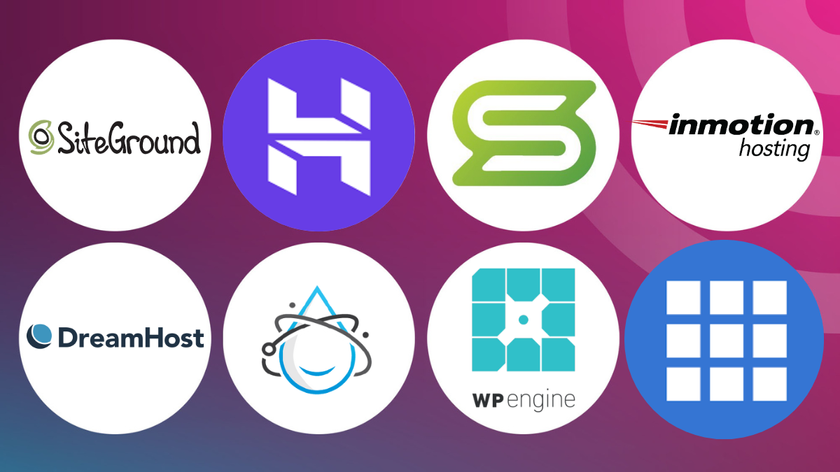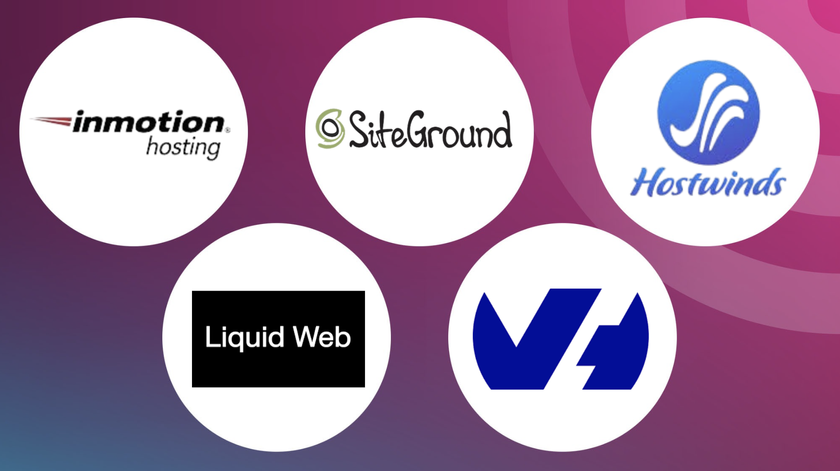TechRadar Verdict
Leaseweb is an experienced Netherlands-based web hosting provider offering a myriad of professional services for different-sized businesses. While worth considering, those with more modest needs should do well to keep their options open.
Pros
- +
Global net of data centers to choose from
- +
High-end plans present a good balance between price and quality
- +
Transparent pricing policy
- +
Wide range of hosting-related options
Cons
- -
No money-back guarantee
- -
Not geared towards newcomers
- -
Only annual subscription is available
- -
Shared hosting plans are somewhat limited
Why you can trust TechRadar
In the company's own words, the story of Leaseweb started in the clouds (yes, literally) when a couple of Dutch pilots realized the importance of reliability and global connections in the cloud(s) and below them. With that in mind, in 1997 Con Zwinkels and Laurens Rosenthal founded a cloud hosting company by the name Leaseweb. Originally headquartered in Utrecht, the Netherlands, in 2007 they relocated the company’s headquarters to Amsterdam and have remained there since.
Today, they operate eighteen ISO certified data centers across Europe, Asia, Australia and the US. With more than twenty years of industry experience behind them, they offer a myriad of services that include shared hosting, dedicated servers, VPS, private and hybrid cloud hosting, CDN and object storage.
- Want to try Leaseweb? Check out the website here
Leaseweb’s main website leaves an impression of modern design, commitment and user-friendliness. While the default language is English, the site is available in a couple of additional languages (German, French and Dutch) and to our best knowledge, the translation is complete and done in a professional way.
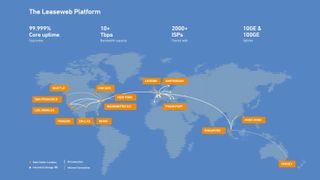
Scrolling down the landing page will take you to the interactive world map, where all of their data centers are tagged. Clicking on any of them will take to the page with additional data regarding the chosen location, which is both informative and an important indicator of a responsible approach to business.
Leaseweb’s website features one of the more exhaustive and creative “About us” sections we have witnessed so far. Even more, they have an official blog and a terrific one to boot. It includes a large number of different interrelated categories (dedicated servers, CND, open source, tutorials, e-commerce, online gaming and so on) each of which contains a number of well-written up-to-date articles.
As for social networks, Leaseweb is present on LinkedIn, Facebook, Twitter and YouTube, but for whatever reason none of the accounts were particularly active this year.
Plans and pricing
There are so many different hosting options that it’s practically impossible to give them all the attention they deserve. The enterprise-level ones have a whole array of different plans and they are all customizable to best fit the needs of their user. A freelancer or an owner of a small business who wants a simpler website can choose between four shared hosting plans (simply labeled as S, M, L and XL) that correspond with each operating system (Linux and Windows). We should note that the ones for Windows are a bit more expensive, which came as no surprise.
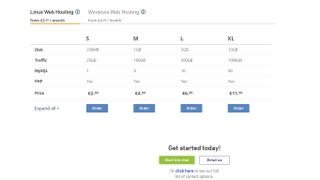
The cheapest Linux-based shared hosting plan costs €2.99 ($3.56) per month and includes: 250MB of disc space, 25GB of traffic, unlimited subdomains and domain aliases, up to 250 e-mail accounts, 5GB of mailbox space, unlimited e-mail aliases, Antivirus & Spamfilter, optional SSL certificate and daily backups, among other things. However, since this plan is rather limited, most users will gravitate towards a medium or a large one.
All Leaseweb’s hosting plans are available only for an annual subscription, which is an inflexible option that might be a turn-off to a number of potential customers. Another drawback is non-existence of a money-back guarantee.
With Leaseweb, all purchases can be made via credit cards, PayPal and bank transfer.
| Yes | No | Header Cell - Column 2 | Header Cell - Column 3 |
|---|---|---|---|
| Shared hosting | Website builder | Row 0 - Cell 2 | Row 0 - Cell 3 |
| Small business hosting | Free hosting | Row 1 - Cell 2 | Row 1 - Cell 3 |
| Colocation hosting | Green hosting | Row 2 - Cell 2 | Row 2 - Cell 3 |
| E-commerce hosting | Video hosting | Row 3 - Cell 2 | Row 3 - Cell 3 |
| Managed hosting | Managed WordPress Hosting | Row 4 - Cell 2 | Row 4 - Cell 3 |
| WordPress hosting | Bare metal hosting | Row 5 - Cell 2 | Row 5 - Cell 3 |
| Linux hosting | Row 6 - Cell 1 | Row 6 - Cell 2 | Row 6 - Cell 3 |
| Windows hosting | Row 7 - Cell 1 | Row 7 - Cell 2 | Row 7 - Cell 3 |
| Dedicated hosting | Row 8 - Cell 1 | Row 8 - Cell 2 | Row 8 - Cell 3 |
| Cloud hosting | Row 9 - Cell 1 | Row 9 - Cell 2 | Row 9 - Cell 3 |
| VPS hosting | Row 10 - Cell 1 | Row 10 - Cell 2 | Row 10 - Cell 3 |
| Email hosting | Row 11 - Cell 1 | Row 11 - Cell 2 | Row 11 - Cell 3 |
| Reseller hosting | Row 12 - Cell 1 | Row 12 - Cell 2 | Row 12 - Cell 3 |
Ease of use
When purchasing a shared hosting plan we had to submit for a year, since we weren’t given an option to do otherwise. All we could do was to select one of four plans (which are presented in great detail) and an operating system we wanted to use. After this, you’ll be asked to choose a new domain name (with the most popular extensions being highlighted) or transfer an old one. The number of possible domains is immense, but so can be their prices, ranging from €6.00 ($7.16) to €133 ($158) for a year.
To create our Leaseweb account, we had to provide them with the usual personal data: name, e-mail address, phone number, home address and the rest. After this, we choose a payment method, recheck all the details and finally complete the purchase. Following this, we were merely informed to expect to be contacted (via phone or e-mail) by Leaseweb’s team within the next 24 hours, after which our newly created website would appear (sooner or later).
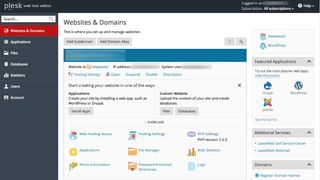
Depending on the chosen plan (shared hosting comes with Plesk), three control panels are available: user-friendly and Windows-based Plesk, a popular feature-packed Linux-based cPanel, and Vesta, a Linux-based open source hosting control panel. Although there are some functional differences between the three, most users will have no trouble creating and managing their websites’ content with either of these.
App-installations are made easy and while the number of available ones is not impressively huge, the most popular ones are available (WordPress, Fantastico, Joomla, Magento, Drupal and more). A competent file manager enables uploading files to one's website without difficulty, as well as managing all its content. Advanced users are able to access via FTP, SSH or RDP on Windows by enabling it on their account. Additionally, a few extra tools are available to those who want to add subdomains, create more accounts or check details about bandwidth usage and website traffic.
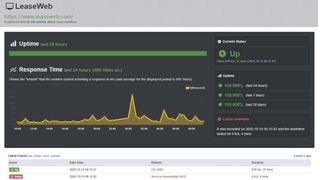
Speed and experience
Leaseweb promises nothing less than an “uncompromising performance” without going too much into details. After putting their main website’s speed performance to the test, we have to note that their confidence is mostly justified. A report by GTmetrix evaluated the performance of their site as above-average. The full load time was 3.3 seconds, which looks pretty promising when compared to the average result of 8.1 second. At the same time, it took 112 requests, which is a bit higher than expected (the average being 98 requests), but nothing to worry about.
As for uptime, Leaseweb promises an impressive 99.999% of it, but not when it comes to shared hosting. Nevertheless, after performing an uptime test provided by UptimeRobot for more than a month, we witnessed almost a flawless performance. Only one instance of downtime occurred and lasted for 4 minutes before it was fixed, so this probably isn’t something that will present a problem in the future.

Support
Seeking customer support on Leaseweb’s website will take you to their knowledgebase, which immediately struck us with its uncomplicated, user-friendly and professional-looking interface. Its articles are divided into eight rather logical categories which are further expanded into a number of additional subcategories and so forth. Finding the information you want, even while using the search box, is as easy as anything. Articles themselves are awfully simple for the most part and often implying prior knowledge on the matter, which could be making things difficult for total beginners.
Fortunately, there are other ways to get assistance: telephone, live chat, support ticket, e-mail (online contact form) and, if you are really into retro, fax. Although we tried our luck with the live chat and got a satisfactory response in a reasonable period, you should keep in mind that the company's response time depends on your hosting plan. There, by the rule, high-end plans guarantee a faster response than the others.
The competition
Considering their business models, PowWeb and Leaseweb seem poles apart. While PowWeb provides a single one-size-fits-all plan, Leaseweb offers so many plans going through all of them might result in analysis paralysis. However, if this is to be your first website, then the choice is a lot easier. PowWeb’s hosting plan has fewer limitations and an addition of a free domain, user-friendly website builder, 30-day money-back guarantee, and all this for roughly the same price.
Both Leaseweb and Hostgator are reputable web hosting providers with years of experience under their belts and a full range of hosting options to choose from. That being said, Leaseweb is more oriented towards medium to large businesses, while Hostgator has something attractive for everyone, especially to newcomers. And with its generous 45-day full-money-back guarantee, you’ll have more than enough time to make a definitive decision.
Bluehost is famous for its low-priced model, easy-to-use interface and a single-click installs, and, based on that criteria, Leaseweb is not far behind it. However, Bluehost’s shared hosting plans feature fewer limitations, support more apps and (which is always a major point) provide all of its users with a money-back guarantee.
Both HostDime and Leaseweb provide reliable enterprise-level hosting, with data centers to choose from found all over the globe. However, with HostDime shared hosting isn’t an option, while with Leaseweb (although somewhat limited) it is, so the choice is related to the needs of your business as much as ito your personal preferences.
Final verdict
Leaseweb features a wide array of reasonable prices and powerful hosting solutions that can respond to the needs of the most demanding businesses. They are confident enough to exclude money-back guarantee from their products, which could, ironically, discourage a number of potential customers. Ultimately, their high-end plans do offer an excellent value for money. However, if you are creating your first website or searching for something a bit simpler, Bluehost or Hostgator can provide a perfect alternative.
- We've also highlighted the best web hosting

Mike is a lead security reviewer at Future, where he stress-tests VPNs, antivirus and more to find out which services are sure to keep you safe, and which are best avoided. Mike began his career as a lead software developer in the engineering world, where his creations were used by big-name companies from Rolls Royce to British Nuclear Fuels and British Aerospace. The early PC viruses caught Mike's attention, and he developed an interest in analyzing malware, and learning the low-level technical details of how Windows and network security work under the hood.


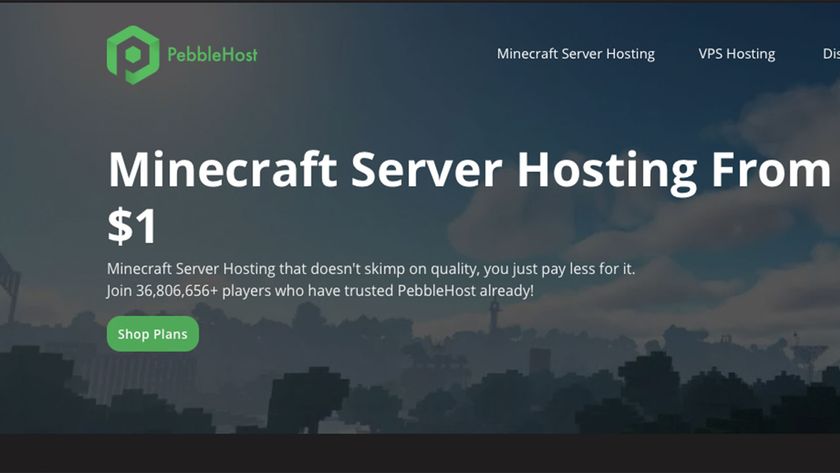

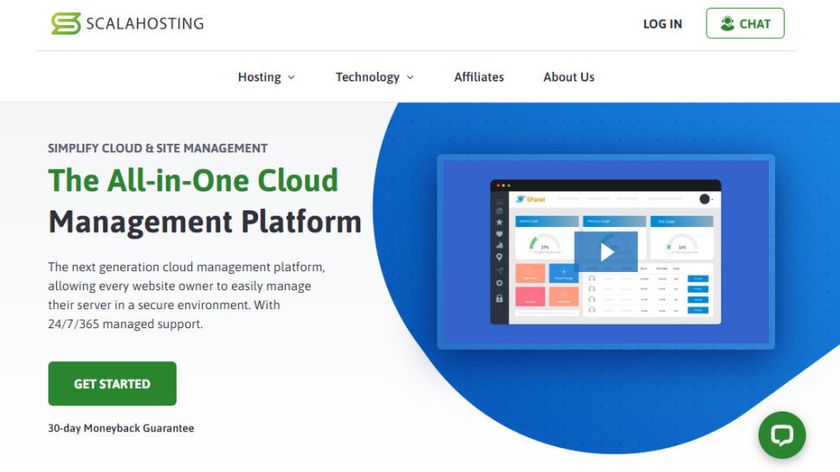








This flight app blew my mind and I’ll never underestimate the role of an air traffic controller ever again

The VQ Cath Kidston 5,000mAh Power Bank is one of the most stylish batteries I’ve seen, but it’s too slow for the price

Amazon has a ton of cheap TVs on sale for March Madness – deals starting at $79.99
